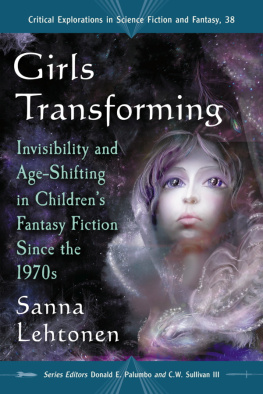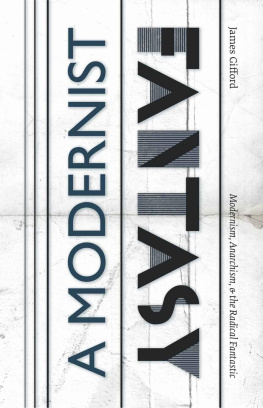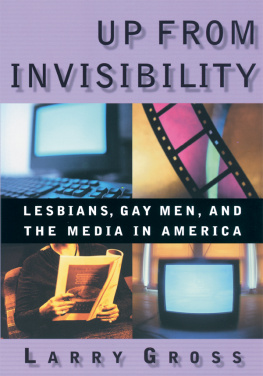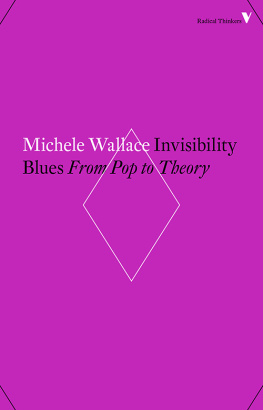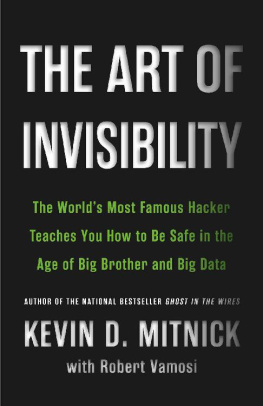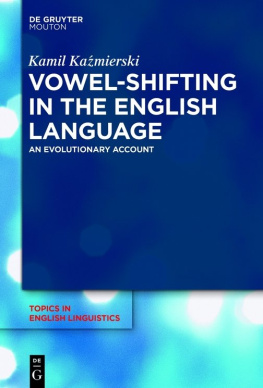
Girls Transforming
Invisibility and Age-Shifting in Childrens Fantasy Fiction Since the 1970s
SANNA LEHTONEN
CRITICAL EXPLORATIONS IN SCIENCE FICTION AND FANTASY, 38

McFarland & Company, Inc., Publishers
Jefferson, North Carolina, and London
LIBRARY OF CONGRESS CATALOGUING DATA ARE AVAILABLE
BRITISH LIBRARY CATALOGUING DATA ARE AVAILABLE
e-ISBN: 978-1-4766-0193-9
2013 Sanna Lehtonen. All rights reserved
No part of this book may be reproduced or transmitted in any form or by any means, electronic or mechanical, including photocopying or recording, or by any information storage and retrieval system, without permission in writing from the publisher.
Cover illustration 2013 Hemera/Thinkstock
McFarland & Company, Inc., Publishers
Box 611, Jefferson, North Carolina 28640
www.mcfarlandpub.com
For Minttu and Antti
Preface
IMAGINE A GIRL OR A YOUNG WOMAN. What if she was able to turn invisible? Would she be free to do whatever she wishes? Would she, like H.G. Wellss invisible man, believe that she could rule the world? Or, is she like the Invisible Girl in Stan Lees and Jack Kirbys Fantastic Four comic series where, in Nalo Hopkinsons interpretation, The guys would be going thwack and pow, and shed be invisible, whimpering, Oh, my. Oh, Reed, oh, oh.? Has she turned into nothing and disappeared or, is she, as French psychoanalytic feminists might suggest, indenable in her invisibility?
Imagine another girl or a young woman. What if she was able to turn magically younger or older, or resist the natural aging process? Would she be the superwoman of our age, the one that is properly empowered but always looks like a twenty-year-old? Or is she the Loathly Lady, the ugly hag who is really a beautiful young girl in disguise or under a curse? Is she a wise young woman? Or is she actually a wise old woman or the ugly hag in the disguise of a young girl? What would she do if she turned younger and forgot her real age? Would she be a happy girl without all the adult female worries? These questions and the representations of fantastically transforming girls and young women are the topic of this studyan exploration that focuses on childrens and young adult books by contemporary English-language fantasists.
Why would someone who is interested in what it means to be a girl and a young woman in contemporary society want to study magic or supernatural bodily transformations in childrens fantasy literature? To start with, bodily transformations are extremely interesting phenomena in regard to aged and gendered identities, both in real life and in ction. Growing up does not necessarily take years. It may take only one signicant moment. One signicant transformation. And what proves this better than literary ction? We are willing to believe that characters are changed by signicant moments. Extraordinary events, rather than ordinary. No ction tells the story of everyday life, year in, year out. No autobiography does that either, for that matter. Ordinary events mold us, slowly, but extraordinary events may transform us in a moment. In real life as well as in ction, experiences and life narratives are not necessarily inscribed into ones bodily appearance; yet bodies affect the ways in which ones subjectivity is interpreted. Fantastic bodily transformations in literature often function as metaphors that address the ways in which ones changing body affects one identity and subjectivity.
Why, then, focus on tropes of invisibility and age-shifting? When I was doing research for this book, I was asked on several occasions whether I had ever wished that I could turn invisible or whether I had ever been an invisible girl. As regards the rst question, the answer is yes, who would not desire invisibility, to be able to do whatever one wants without anyone seeing? When I learned during my researchquite accidentally, in factthat my great-great-grandfather, the last sage in the family, supposedly knew how to make himself invisible, I regretted that he did not pass on his incantations to his son because my great-great-grandfather thought that his son was not good enough a person to become a sage. All that secret knowledge is now lostalthough I am pretty convinced that most of it was based on good stories rather than actual facts. Moreover, if the tradition had been followed faithfully, the incantations would have never reached me since sageness was patrilineal. When it comes to the second question, I never was an invisible girl in the sense that I would not have had a sense of self and personality. I was quiet, shy, yes, but I always knew what I wanted to be and rarely made choices according to other peoples preconceptions of mefor the better or worse. Instead, I have always felt too old or too young for my bodyno one ever asked me about these experiences, though.
While invisibility seems exciting, aging is normal; and so are all kinds of conventional associations linked to how one should behave and what one should be at a certain age. I was amazed by the fact that few people were interested in the trope of age-shifting when at the same time people were obsessed with age and aging, reected, for instance, in the views offered to me of how I should feel about my body and age at different points. As I saw it, (in)visibility, aging and gender were all related, in real world contexts as well as in imaginary realms.
There were also several reasons I wanted to focus on girls, rather than invisible and age-shifting children in general. First, personal experience of the fact visibility and age are assumed to matter to young female subjects in different ways than they matter to young male subjects. Second, there has been surprisingly little interest in representations of girlhood in childrens fantasy literature. Try searching the words girls and fantasy on the Internet and what you will get is not girls identity quests in fantastic ction for children. Indeed, one of the most enlightening comments during my research came, quite unexpectedly, from a male dentist. His reaction to my explanation that I do research on the representation of girlhood in childrens fantasy literature was laughter and an inquiry: Would you be interested in middle-aged mens fantasies as well? Well, isnt that just hilarious, but, no thank you, I would noteven though I cannot avoid them since middle-aged mens fantasies ll a lot of space in the popular culture. This was the answer that I wanted to give. I could not answer though, with a drill in my mouth. I never went back there. His comments told me, however, that still in the twenty-rst century not everyone is eager to hear about girls and young womens experiences of this world or even understand why they would matter in the rst place.
While doing research for this book, however, I found that middle-aged male dentists are not the only ones ignoring representation of girlhood in childrens and young adult fantasy. From the perspective of gender studies and feminist theory, fantasy has not attracted as much attention as other unrealist (or fantastic) genres: science ction, fairy tales, or horror and Gothic ction.
However, the criticism has been limited in two ways. First, it has mainly concentrated on fairy tales and Victorian childrens literatureas Clark points out, much less work has been done with other genres or contemporary texts. These readings aim at nding essentially or authentically feminine or female-oriented characters in stories to serve as suitable role-models for young girls, thus relying on an identication theory which assumes that girls will only identify with their own gender (however that is dened) and that empowered characters will have positive effects on readers.
Next page
